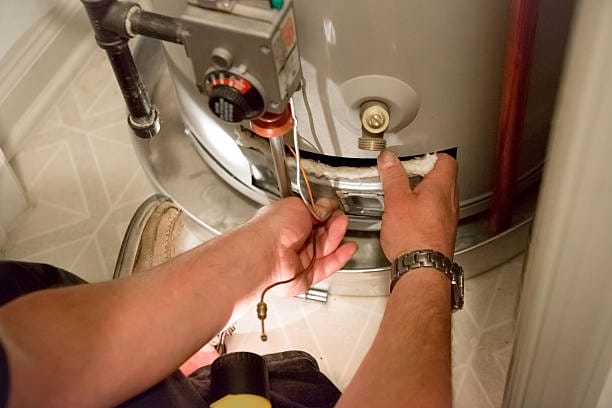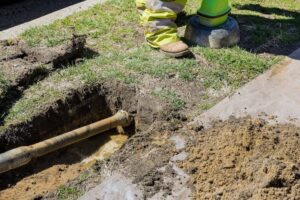Experiencing water heater problems? Learn the most common issues and when to call a professional for repairs.
Hot water is more than a luxury. It’s a necessity. Whether it’s starting the day with a warm shower, cleaning dishes, or doing laundry, our daily routines depend greatly on the water heater. But what happens when that dependable stream of hot water turns cold, rust-colored, or stops flowing altogether?
If you’ve been searching for water heater repair services, you’re likely dealing with frustrating symptoms that need prompt attention. At Smelscer Plumbing, we help homeowners and businesses across Central Texas identify, troubleshoot, and fix water heater issues quickly and professionally.
Why Water Heaters Fail
Water heaters endure constant pressure and temperature changes, which leads to natural wear and tear. Several factors contribute to water heater failure:
- Hard water causing mineral deposits
- Lack of routine maintenance
- Outdated components
- Improper installation
- High water pressure stressing internal parts
- Age (most water heaters last 8–12 years)
Common Water Heater Problems (With Symptoms)
No Hot Water
Possible causes: Tripped breaker, faulty thermostat, broken heating element, or gas ignition failure.
Symptoms: Cold water even after running the tap for a few minutes.
Insufficient Hot Water
Possible causes: Malfunctioning thermostat, sediment buildup, or undersized unit.
Symptoms: Water gets warm but not hot, or runs out too quickly.
Strange Noises (Popping or Rumbling)
Possible causes: Sediment buildupat the bottom of the tank.
Symptoms: Audible banging or rumbling when heating.
Discolored or Rusty Water
Possible causes: Corroded anode rod or internal rust.
Symptoms: Orange or brown-tinted hot water.
Leaks Around the Tank
Possible causes: Loose connections, failing pressure valve, or tank corrosion.
Symptoms: Visible puddles near the heater.
Low Hot Water Pressure
Possible causes: Sediment or mineral buildup in pipes.
Symptoms: Weak flow from hot taps.
DIY Troubleshooting: What You Can Safely Do
Reset Circuit Breaker or Check Pilot Light
- Electric unit? Make sure the breaker hasn’t tripped.
- Gas unit? Check if the pilot light is lit.
Adjust Thermostat Settings
- Ideal range: 120°F–140°F.
- Set, wait an hour, and test the results.
Flush the Tank
- Turn off power/gas and water supply.
- Attach hose to drain valve and flush to remove sediment.
Check for Leaks
- Tighten visible, loose connections.
- Do not open or tinker with internal components.
Important:When in doubt, play it safe. Reach out to a licensed plumber.

When It’s Time to Call a Pro
If these basic checks don’t resolve the problem, or if the issue recurs, it’s time to contact professionals like Smelscer Plumbing. You’ll need expert help if you notice:
- Persistent leaks
- Water discoloration or bad odor
- Loud banging or popping
- No consistent hot water
- A unit older than 10 years
Professional repairs prevent safety hazards and restore comfort faster.
Conclusion
Water heater problems can quickly disrupt your daily routine, but knowing the signs and how to respond makes all the difference. While some minor issues can be resolved with simple troubleshooting, others require professional diagnosis and repair. Whether your system is leaking, making strange noises, or just not heating as it should, addressing the problem early can prevent costly damage and restore comfort to your home.
If you’re searching for water heater repair near me, visit Smelscer Plumbingtoday. Count on us for fast, reliable, and trustworthy service whenever you need it.




